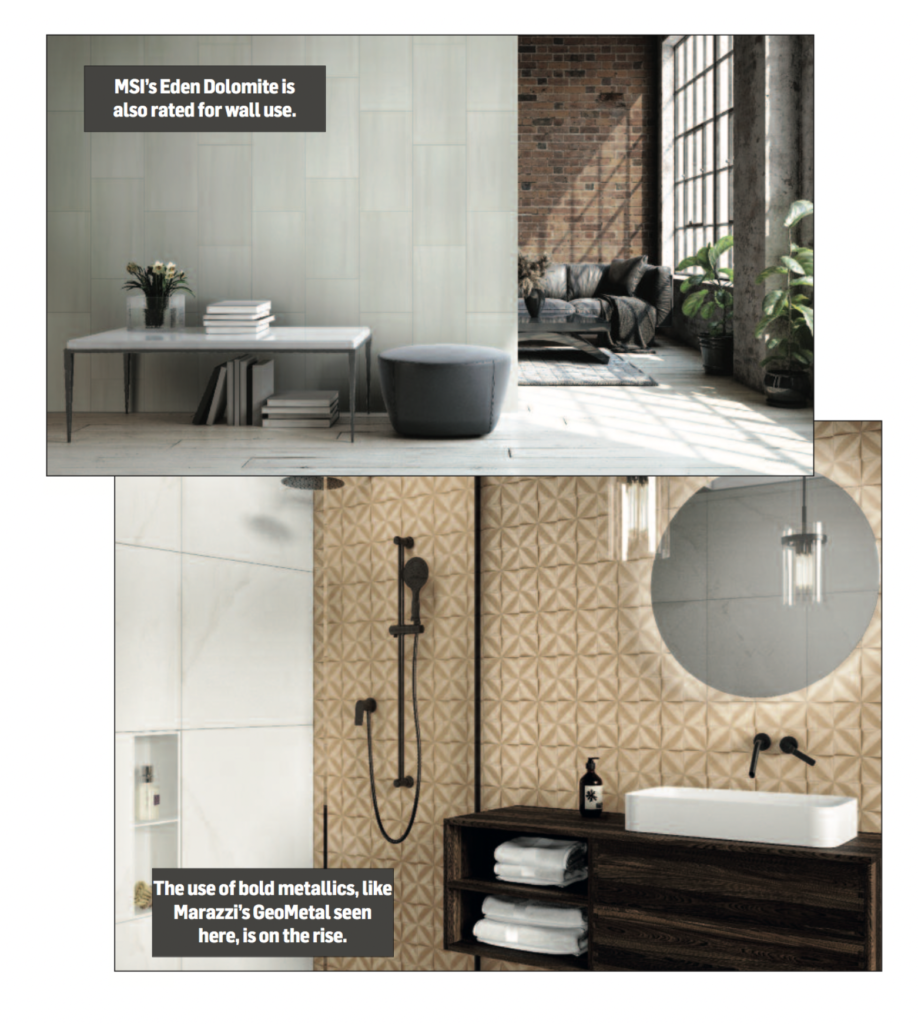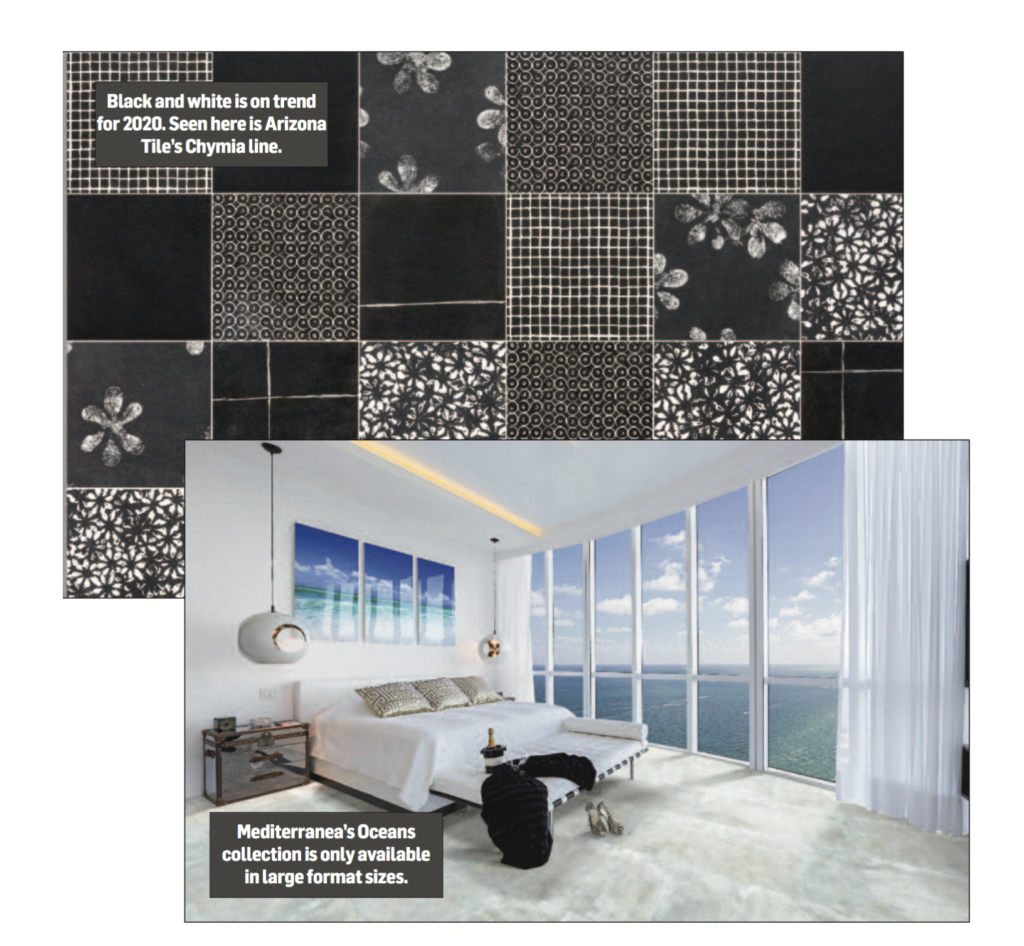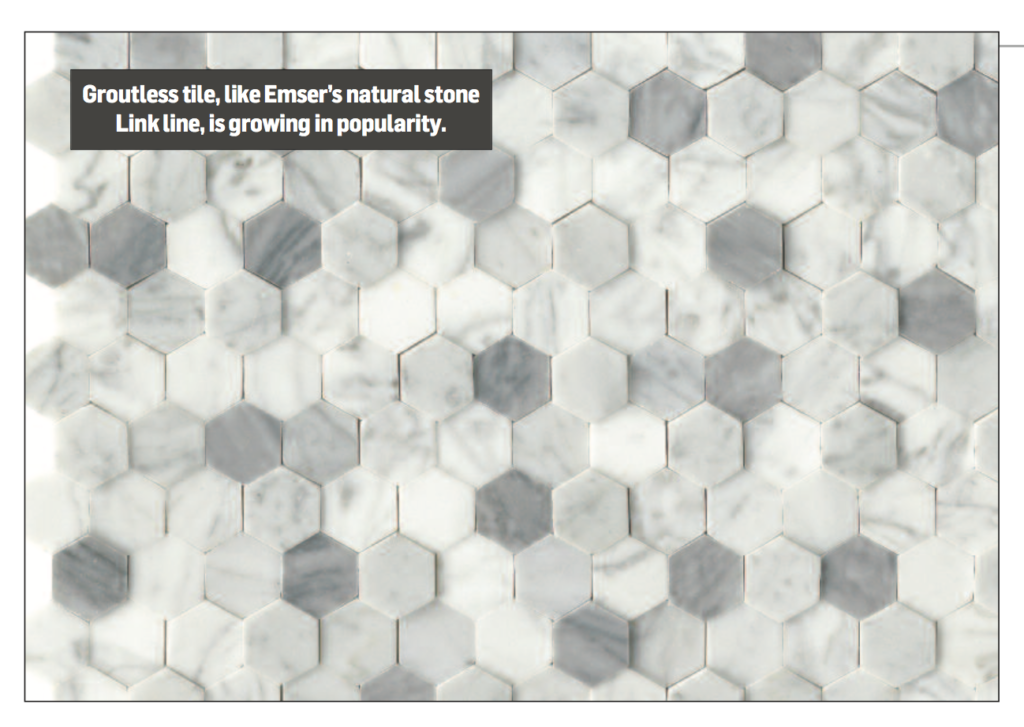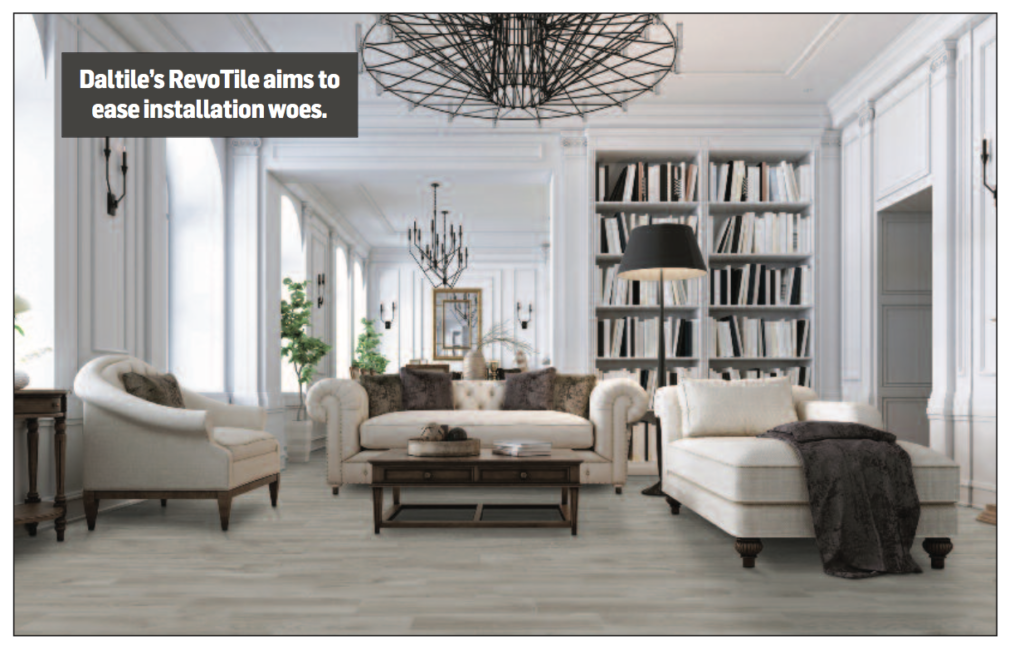March 2/9, 2020: Volume 35, Issue 18
By Megan Salzano
Las Vegas—With the U.S. economy heading into 2020 with a hopeful outlook and poised for growth—unemployment is down and consumer confidence is on the rise—the time for tile to shine is now.
Flooring retailers, including those looking to gain back lost dollars from the growing popularity of vinyl products, would do well to turn to tile and stone, which offers high dollar sales and high margins, according to suppliers at The International Surface Event (TISE) held in Las Vegas earlier this year.
“We love LVT—we sell LVT—but there is a huge market outside of LVT,” said Manny Llerena, director of sales and marketing, MSI. “We think that maybe the retailer has forgotten about that. The U.S. has one of the lowest consumptions per capita of porcelain tile of all developed countries. If we just had the per capita consumption of Canada it would be three times what we’re selling today. So, we really want to remind our retailers of that and inspire them to inspire the customer.”
Inspiration, many suppliers agree, will be the key to success. Today, ceramic and porcelain tile—in addition to their natural stone counterparts—offer endless style options for a consumer who has become focused on creating a singularly unique and design savvy experience at home. For the new decade, design trends include returning favorites as well as fresh styles that tap that consumer need for uniqueness. In addition, they include products that are not only turning consumer heads but those proving to be worthwhile for the retailer’s bottom line.
Indoor/outdoor, for example, taps the consumer’s pen- chant for outdoor living spaces while also allowing retailers to expand their offerings into a new area of the home. Large-format tiles continue to make waves in the market, but suppliers agree 2020 will finally see spending dollars support the product on both the commercial and residential sides of the business.
Decoratives will also continue to prove their worth in the market—think accent walls, backsplashes, bathroom floor/wall coordination and, most importantly, adding that “pop” of individuality. In terms of colorways, blue has moved to the top of the design heap as buyers continue to reach for this fresh, calming neutral to complement various design tastes, while black and white is coming on strong once again.
Suppliers suggest allowing consumers to visualize these trends within their home through a showroom vignette or clever, space-saving merchandising for successful growth in 2020.
 Look this way
Look this way
There are several looks poised to dominate the new decade, but what each has in common is the ability to add uniqueness to a home. Polished, for example, is making a comeback; however, some suppliers are offering up new takes on the classic finish. Case in point: Eden Dolomite from MSI. The supplier unveiled the collection at TISE, which features a polished wood look as opposed to the traditional polished stone.
“It’s meeting that modern farmhouse look with neutral colors, but it’s unique and affordable,” Llerena said. “[Retailers should] offer [the customer] the uniqueness. You tell them you have something in the high-end styling yet casual and warm. And the price point—it immediately gets them excited.”
Emily Holle, trend/design director, added, “We’ve seen a lot of success in polished; the numbers are there. It’s something that can’t be achieved in LVT or hardwood, so it offers a differentiation. [Specialty flooring retailers] can [use that as a selling point], and it’s also an extension of their line of polished already selling for them.”
Other polished styles in more traditional stone looks were also present at the show, making it apparent that not only is polished finding its way back into today’s homes but that stone looks continue to drive the market. Emser Tile, for example, reinvigorated its Esplanade line of travertine-inspired glazed porcelain with a new polished look that it unveiled at TISE. “There are staple products, but now people want to incorporate some pop,” said Kathy Greene, director of brand strategy and communications. “Along those lines we’re seeing color, metals and a request to add polish.”
That need for a pop has lent itself to a growth in decorative tile sales as well. Metallics—a design trend in itself but vastly incorporated into myriad decorative lines—are taking an even edgier turn than in previous years. While in the past metallics were added as a decorative accent, today they are positioned center stage. Marazzi, for example, launched its GeoMetal line at TISE. This bold metallic wall tile features a three-dimensional structure available in an eye-catching hex and harlequin mosaic.
 Color, sizes and shapes
Color, sizes and shapes
In addition to eye-catching design styles, colors, sizes and shapes are top factors when choosing the right tile option for the home. These design features are also a significant element for retailers to consider when looking to onboard new tile products. Following the trends along these three factors is key to a successful assortment.
For 2020, those trends include returning favorites that are picking up speed in the market and new looks poised to fulfill burgeoning consumer tastes. When it comes to color, blue has taken hold in a major way. Suppliers agree that while blue allows for the pop of color consumers today crave, it is also essentially a neutral foundation around which to marry various design tastes. As such, the blue trend has picked up speed and is expected to be a reigning colorway in 2020.
Black and white has also come back in vogue. Several tile suppliers showcased new black and white tile lines at TISE. Arizona Tile, for example, unveiled its Chymia line of black and white rectified color body porcelain. The line combines patterns and prints in a monochromatic visual. Arizona Tile carries Chymia in four color variations, each in a 12 x 12-inch tile size.
Turning to size, a returning favorite in terms of trending design is large- format tile. For several years now suppliers have offered anywhere from 24 x 24-inch squares to 24 x 48-inch planks and upwards of 126-inch slab sizes. The style became popular in commercial spaces where labor and price points more easily suited the end user. However, suppliers agree the dollars are beginning to back large format residential design. “A move toward larger formats is powerful and going to continue,” said Don Mariutto, vice president, operations and marketing, Mediterranea. “Large format is growing—I’d say it’s starting to gain the dollars.”
At TISE, Mediterranea unveiled its Oceans collection, a concrete/stone hybrid look available in large format 12 x 24-inch and 24 x 48-inch sizes.
Shapes have always been a unique point of allure for the tile category. While others struggle to replicate nuanced or intricate forms that suit the needs of consumers, tile is a leader. For 2020, hexagons are coming on strong. The shape has been growing in popularity and this year has exploded onto the scene with several suppliers launching hexagon-shaped series that tout added texture, alluring color and novel sizes. Daltile’s Bee Hive Medley collection, which was unveiled at TISE, was developed to help users create fun, playful spaces with a twist.
Boosting retail sales

 While impacted by the current lack of qualified installers, the tile category offers numerous opportunities for retail sales growth. Several new trends are emerging for 2020 that are poised to boost the bottom line for retail if supported properly.
While impacted by the current lack of qualified installers, the tile category offers numerous opportunities for retail sales growth. Several new trends are emerging for 2020 that are poised to boost the bottom line for retail if supported properly.
Embracing the indoor/outdoor trend, for example, could equate to additional dollars for the specialty flooring retailer. “If you’re looking for additional dollars that you may be losing in LVT, you have to get behind the indoor/outdoor trend,” MSI’s Llerena said. “I think many [retailers] shy away because they don’t have all the resources—they’re looking for installers to do the outdoors. And yet, the consumer is out there looking for outdoor options day in and day out. The whole idea of expanding your living space outside your home is very important to them. I think [retailers] have to do a little homework. Go out there and talk to the landscapers and hardscapes and see if you can partner. Talk to them about installation, and then show it appropriately.”
To help retailers in that endeavor—and in addition to launching multiple indoor/outdoor collections at TISE—MSI developed a merchandising display that pairs coordinating indoor/outdoor tile with room scene inspiration in a relatively small space.
Installation, however, remains a key pain point for the category. As such, tile suppliers are looking at new ways to ease the burden. RevoTile, for example, is Daltile’s response to the installer crisis. The patented, floating floor system is genuine porcelain that can be installed in one day. “You’ve got an installer base that is aging out, and there are not as many coming up,” said Paij Thorn-Brooks, vice president of marketing for Dal-Tile. “With RevoTile, you’ve expanded your installer base to laminate and LVF installers. It isn’t any different from other floating floor systems except you have to grout, but that’s a very easy one-part grout to learn to use. Also, you’re actually bringing DIY into tile. The opportunities are huge. I think the industry has wanted this solution for a long, long time.”
Groutless tile options have also gained traction in an effort to combat some of tile’s pain points. Several suppliers are beginning to grow their sans-grout lines in an effort to ease installation woes. In addition, groutless tile and stone offers a nuanced look compared with traditional options. Emser Tile unveiled its Link stone mosaic, for example, which is available in an on-trend hexagon shape.
